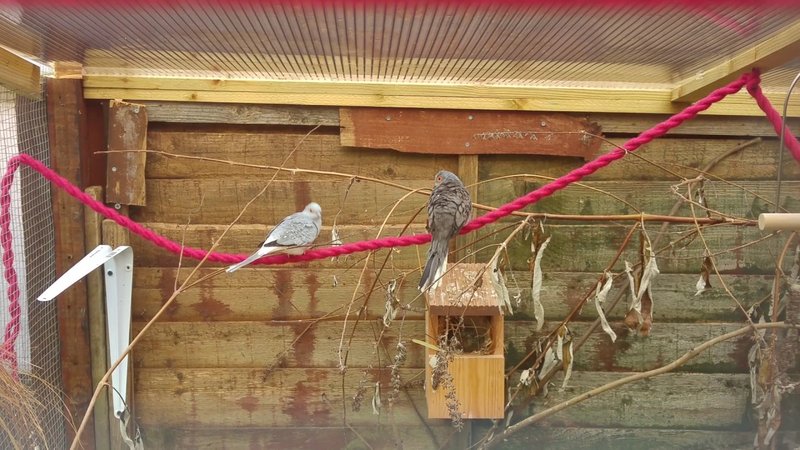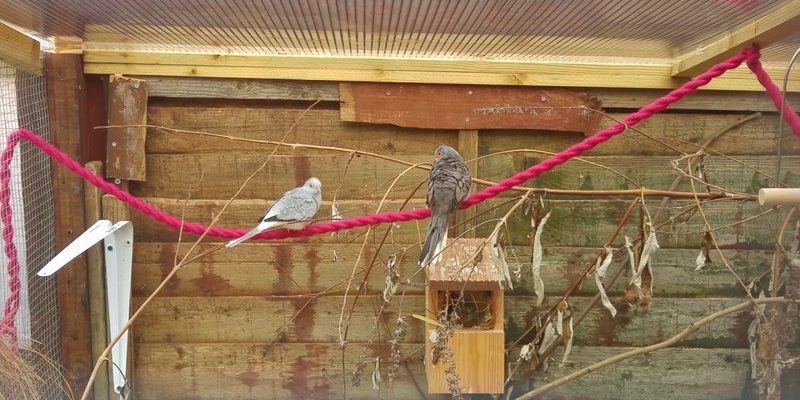
Building an aviary might sound daunting, but it can be a fun project. You don’t need to be a master carpenter or an architect; with the right guidance, anyone can create a safe haven for these gentle birds. In this guide, I’ll walk you through everything from planning your aviary design to ensuring the safety of your feathered friends. Let’s dive in!
Why Choose an Outdoor Aviary for Doves?
Choosing an outdoor aviary for your doves offers several benefits that can greatly enhance their quality of life. Doves are naturally social creatures, and an aviary allows them to interact in a spacious environment that mimics their natural habitat. Without the constraints of a typical cage, they can fly freely, sunbathe, and engage in playful activities that are essential for their well-being.
Moreover, an outdoor aviary can serve as a wonderful focal point in your garden or backyard. Imagine a well-constructed structure, adorned with plants and perches, harmoniously blending into your landscape. You not only provide a home for your doves but also create an aesthetic addition to your outdoor space. Plus, it’s a great way to help your children or family get involved in caring for animals!
Planning Your Aviary: Size and Design Considerations
When planning your aviary, size is one of the most crucial factors. The larger the space, the happier your doves will be. As a general rule, aim for an aviary that’s at least 4 feet wide, 8 feet long, and 6 feet high for a small group of doves. This gives them ample room to fly and explore.
In terms of design, consider what kind of features you want to include. You might want to add:
- Perches: Different heights and materials can provide exercise opportunities.
- Nesting boxes: These can offer cozy spots for rest and breeding.
- Plants: Non-toxic plants can create a more natural feel and provide shade.
Remember to think about the *layout*—doves thrive with some privacy, so it’s essential to include hiding spots and varied structures. Here’s the thing: the more engaging your aviary is, the happier and healthier your doves will be.
Choosing the Right Materials
Now that you have a design in mind, it’s time to talk about materials. The materials you choose will play a big role in the longevity and safety of your aviary. Here are some options:
– Frames: Wood, aluminum, or galvanized steel are popular choices. Wood is aesthetically pleasing but needs treatment to withstand the elements.
– Mesh: Use strong, galvanized wire mesh to secure the aviary. This prevents predators from getting in while allowing ventilation.
– Roofing: Consider a solid roof or a wire covering. A solid roof protects from rain and hawks, but make sure it allows for sunlight.
When deciding on materials, think about durability and safety. You want an aviary that can withstand both Mother Nature and curious raccoons!
Building Your Aviary: Step-by-Step Instructions
Building an aviary can seem overwhelming, but breaking it down into steps makes it manageable. Here’s a simple guide to get you started:
1. Gather Your Materials: Make sure you have all the necessary items, including your chosen frame material, mesh, tools, and any decorative items.
2. Prepare the Site: Choose a dry, flat area in your yard that’s away from any potential hazards, like overhanging branches.
3. Construct the Frame: Begin by assembling the frame based on your design. Ensure that the structure is sturdy and square.
4. Attach the Mesh: Cover the sides with galvanized wire mesh. Make sure to secure it tightly to prevent any gaps.
5. Add Features: Install perches, nesting boxes, and any plants. This is where you can get creative!
6. Check for Safety: Before introducing your doves, inspect the aviary thoroughly for sharp edges or loose wire.
Each step takes time, so be patient. Trust me, the satisfaction of seeing your doves happily exploring their new space will be worth every effort!
Ensuring Safety in Your Aviary
Safety should be your top priority when building an aviary. Doves are vulnerable to predators, so here’s how to keep them safe:
– Predator-Proofing: Ensure the aviary is secure from cats, raccoons, and birds of prey. Use strong mesh and cover any openings.
– Regular Inspections: Check the aviary regularly for wear and tear. Look for any signs of damage or areas that might need reinforcement.
– Environment Control: Make sure your aviary has plenty of shade and shelter from harsh weather. This helps protect your doves from overheating or becoming too cold.
– Not Too Crowded: Overcrowding can lead to stress and aggression. Keep an eye on the number of doves you have and how they’re interacting.
By taking these safety steps, you’ll create a comfortable and secure haven for your doves.
Maintaining Your Aviary: Cleaning and Care
No aviary is complete without a maintenance routine. Regular cleaning helps keep your doves happy and healthy. Here’s how to manage it:
– Daily Checks: Spend a few minutes each day checking food and water levels. Fresh food and clean water are essential for their health.
– Weekly Cleaning: At least once a week, remove any droppings, uneaten food, and debris. A scrub down with mild soap and water will help keep everything fresh.
– Deep Cleaning: Every month, do a thorough cleaning of the aviary. This includes removing perches and nesting boxes to clean them separately.
Keeping the aviary clean not only ensures your doves thrive but also helps control any unwanted odors. Just imagine how lovely it will be to have a clean, vibrant place for your doves.
Choosing the Right Doves for Your Aviary
Now that you have the perfect aviary, you might be wondering what types of doves are best suited for it. Common options include:
– Ringneck Doves: Friendly and social, they adapt well to aviaries and are often seen in pairs.
– Mourning Doves: These gentle creatures are known for their soft cooing. They prefer larger aviaries due to their active nature.
– Diamond Doves: Smaller in size, these doves are colorful and can thrive in slightly smaller spaces.
When choosing doves, consider their compatibility and social needs. Some might prefer to be in pairs or groups. You’ll want a mix that vibes well together!
In conclusion, building an outdoor aviary for doves is both a fun project and a rewarding way to create a safe haven for your feathered friends. With the right planning, materials, and safety considerations, your doves will enjoy their new home for years to come. Take your time, enjoy the process, and soon you’ll have a beautiful aviary filled with happy, chirping doves!

